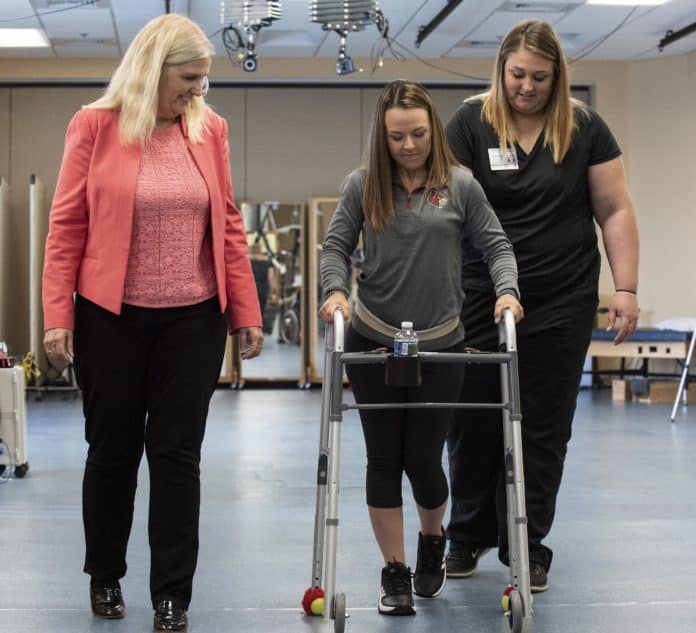In one such development, a team from the Minnesota-based medical research centre the Mayo Clinic and the University of California, Los Angeles (UCLA) has used an implanted spinal cord stimulator to help a man paralysed from the chest down since 2013 regain his ability to stand and walk with assistance.
The 29 year old patient, Jered Chinnock, injured his spinal cord at the thoracic vertebrae in the middle of his back in a snowmobile accident in 2013 and was diagnosed with a complete loss of function below the middle of his torso.
In the study, which is reported in Nature Medicine, Chinnock had an electrode implanted into the epidural space, the outermost part of the spinal canal, at a specific location below the injured area. The electrode connects to a pulse generator device under the skin of his abdomen and communicates wirelessly with an external controller.
During 113 rehabilitation sessions, over which time the researchers adjusted stimulation settings, trainer assistance, harness support and treadmill speed Chinnock was able to walk over ground using a front-wheeled walker and step on a treadmill placing his arms on support bars to help with balance. However, when stimulation was off, he remained paralysed. Amazingly, over the course of 25 weeks his condition improved to the point where by the end of the period, he no longer needed a harness to reduce his risk of falling, and required only occasional help from trainers.
“What this is teaching us is that those networks of neurons below a spinal cord injury still can function after paralysis,” said Kendall Lee, M.D., Ph.D., co-principal investigator, neurosurgeon and director of Mayo Clinic's Neural Engineering Laboratories.
In a related breakthrough, a team at the University of Louisville, have used a combination of epidural stimulation of the spinal cord and locomotor training to enable two severely paralysed patients to walk again.

Epidural stimulation is the application of continuous electrical current at varying frequencies and intensities to specific locations on the lumbosacral spinal cord – a location which corresponds to the dense neural networks that largely control movement of the hips, knees, ankles and toes.
Meanwhile, locomotor training aims to ultimately retrain the spinal cord to “remember” the pattern of walking by repetitively practicing standing and stepping. In a locomotor training therapy session, the participant’s body weight is supported in a harness while specially trained staff move his or her legs to simulate walking while on a treadmill.
“This research demonstrates that some brain-to-spine connectivity may be restored years after a spinal cord injury as these participants living with motor complete paralysis were able to walk, stand, regain trunk mobility and recover a number of motor functions without physical assistance when using the epidural stimulator and maintaining focus to take steps,” said Susan Harkema, PhD, the study’s author.
One of the patients to benefit from the research, 23 year old Kelly Thomas, who was paralysed from the chest down after a 2014 car accident said: “Being a participant in this study truly changed my life, as it has provided me with a hope that I didn’t think was possible after my car accident.”




Labour pledge to tackle four key barriers in UK energy transition
I'm all for clarity and would welcome anyone who can enlighten me about what Labour's plans are for the size and scale of this Great British Energy....